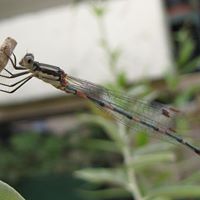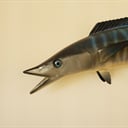What is the largest species of ray?
The giant oceanic manta ray (Manta birostris) is a species of ray in the family Mobulidae, and the largest type of ray in the world. They are circumglobal and are typically found in tropical and subtropical waters, but can also be found in temperate waters.
The giant oceanic manta ray can grow to a disc size of up to 7 m (23 ft) across with a weight of about 3,000 kg (6,600 lb) but average size commonly observed is 4.5 m (15 ft). It is dorsoventrally flattened and has large, triangular pectoral fins on either side of the disc. At the front, it has a pair of cephalic fins which are forward extensions of the pectoral fins. These can be rolled up in a spiral for swimming or can be flared out to channel water into the large, forward-pointing, rectangular mouth when the animal is feeding.
The teeth are in a band of 18 rows and are restricted to the central part of the lower jaw. The eyes and the spiracles are on the side of the head behind the cephalic fins, and the gill slits are on the ventral (under) surface. It has a small dorsal fin and the tail is long and whip-like. The manta ray does not have a spiny tail as do the closely related devil rays (Mobula spp.) but has a knob-like bulge at base of its tail.
More Info:
en.wikipedia.org










